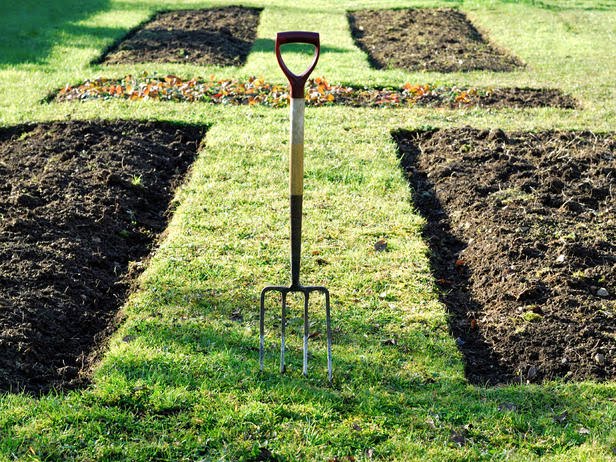Get Your Vegetable Garden Ready for Planting
Location and preparation
Select the right location. Vegetable beds require at least six full hours of sun every day. Morning sun will dry off the plant leaves, preventing many diseases such as rot and mildew. Vegetables that don’t get at least six hours of sun may not produce food, or will produce less food than they should. They’ll also be more prone to disease.
Remove all rocks from the vegetable garden bed and cover the location with layers of newspaper or cardboard, the autumn before planting. Cover the cardboard with rich organic compost and this will kill weeds and enrich the soil. (If the area is relatively weed free, you may instead rototill organic matter such as leaves and manure into the soil.)
Rototill the bed in the early spring, when the soil is no longer wet.
Test your soil’s pH, using a soil-testing kit from a gardening center.
 Amend the soil, as instructed by the soil testing kit. This may mean adding peat moss, lime or some other organic material to make the soil more fertile.
Amend the soil, as instructed by the soil testing kit. This may mean adding peat moss, lime or some other organic material to make the soil more fertile.Double dig the soil, using a shovel or spade. Dig a trench about a foot wide along one side of the garden, to the full depth of the shovel. Place the soil you dig up to one side of the trench. When you begin the next trench, next to the first one, put the soil from the second trench into the first trench. This process lets your plants’ roots grow deeply, allowing them to be more productive and making it possible to sow plants closer together.
Rake the soil to level it.
Measure out rows, marking them with stakes. Make the rows far enough apart that you can easily walk between them. Place one stake at the beginning of each row and one stake at the end. Tie twine to a stake at the beginning of a row and stretch it across to the corresponding stake at the end of the row. Repeat for every row.
Hoe a small mound for each row, directly underneath the twine.
Water the garden well, and allow to drain for a few minutes.
Sow seeds directly into the soil, as directed on the seed packages, or plant seedlings according to nursery labels.











Comments
Post a Comment